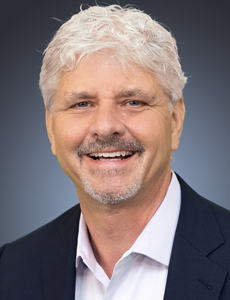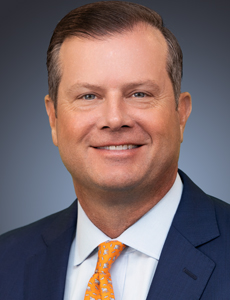Modernizing Workers’ Comp: What One Occupational Health Provider Envisions for a Next-Level Platform to Streamline Care

The workers’ comp system is notorious for its complexity — not only the many nuanced rules and regulations but also the many parties involved: injured workers, employers, insurance carriers, TPAs, case managers, adjusters and providers. Sharing information and keeping everyone on the same page is a continual challenge, but it is critical to injured worker recovery and keeping a claim moving forward.
Today, in workers’ comp but also health care in general, access to information has become just as important as clinical outcomes.
“In our conversations with customers and in our market research, it is evident that while clinical outcomes certainly are important, they are becoming almost secondary to access to information,” said Jon Conser, EVP, chief growth and customer officer, Concentra.
Transparent sharing of information streamlines communication, increasing the speed and efficiency of claim management. It enables case managers and adjusters to intervene earlier if a claim is going off the rails. It builds a warehouse of data that can help to identify trends and common pain points. Ultimately, it supports frictionless interactions between all parts of the workers’ comp ecosystem and supports ease of doing business.
But building the platforms and getting buy-in to allow for such data-sharing is easier said than done.
Concentra is taking steps to reach that goal. Here’s what they envision and how the process is unfolding.
Building a Next-Generation Workers’ Comp Platform
The first step in developing its advanced solution set — called Concentra Next — was finding out what customers want from their provider partners.

John deLorimier, EVP, chief digital and data officer, Concentra
“We have been talking about this in the marketplace since before COVID. In 2019, we started having our first round of discussions with clients to understand what their needs are, because we don’t want to create something that’s meaningless and doesn’t fulfill a purpose,” said John deLorimier, EVP, chief digital and data officer, Concentra.
Naturally, different stakeholders have different wants and needs, but one common request was increased speed and ease of doing business.
“Everybody wants accelerated turnaround times. Efficiency is a big deal. In the world of workers’ comp, it can translate into shorter claim durations, better clinical outcomes and reduced costs. But it also just makes the job of claim management easier,” deLorimier said.
“We knew that as an organization, we had to elevate our game. We already had a large physical footprint, with more than 540 medical centers across the country and 140 on-site clinics at employer locations nationwide, but we needed to improve our digital tools to create a more integrated and seamless workflow that is accessible to the whole workers’ comp ecosystem.”
Key Features
Access to real-time, actionable information is the foundation that enables clearer, faster communication, which drives proactive claim management.
The goal for Concentra Next is to provide that access in a few different ways. One is through its digital workflow, starting when an employer authorizes an employee for treatment at a Concentra medical center. Authorizing services online through the Concentra customer portal ensures the desired services will be performed and immediately creates an electronic record that follows the employee for the duration of their care. The registration process is easier for employees, as they receive a message and link that enables them to complete forms online before their visit, reducing the time required for intake and speeding access to the care they need. And once in a center, cross-functional interactions take shape and streamline care delivery.

Jon Conser, EVP, chief growth and customer officer, Concentra
“Our goal is to make that process entirely digital,” said Conser. “In our medical centers, we have a digital whiteboard used to map out the flow of a patient. This includes things like their pre-authorization status, registration status, whether they have checked in for the appointment et cetera.”
Center staff can easily see when patients have arrived and assign them to an available exam room. Digitally capturing the visit also streamlines billing and reporting results back to the employer and payer.
From a broader perspective, capturing visits also allows stakeholders to see how a claim is progressing in real time. Providers, payers, employers and adjusters will be able to get a detailed look at the injured worker’s recovery journey and have easy access to results reporting. The digital workflow connects teams and groups and ensures easy access to accurate information along the way.
“We also are prioritizing data integrity,” deLorimier said. “How do we capture the data from the digital workflow as well as other systems connected to it, transform it into meaningful insights and deliver that back to the customer? We will be leveraging AI and data analytics to ensure the data we collect has a purpose.”
Future plans include leveraging an AI-driven chat feature that can help direct users to the information they need quickly, eliminating the need to phone one of Concentra’s many call centers. This not only saves time for the user but also frees up center employees to focus more on care delivery.
“In today’s competitive recruiting environment, Concentra is leveraging the latest technologies to improve service to our customers,” said Mike Kosuth, executive vice president and chief operating officer of Concentra’s East group. “We’re integrating state-of-the-art tools for our clinicians and support staff to enable them to better serve the patients while experiencing a high level of personal satisfaction in their roles.”

Mike Kosuth, EVP, chief operating officer, Concentra East
Roadblocks and Moving Forward
Of course, any technology initiative will face obstacles. Concentra Next, while already underway, will continue to advance as the needs of stakeholders evolve.
One of the biggest roadblocks that Conser and deLorimier anticipate is a lack of buy-in from customers. With the adoption of any new technology, there has to be a willingness to accept some burden of change management and to invest resources into its implementation.
Data transparency can also be a pain point.
“To create complete data sets, there does have to be a willingness to share data. We can do that by integrating with external systems through APIs or SFTPs. But that has to align with a customer’s own technology roadmap, resources and priorities,” Conser said. “It can be a big undertaking.”
Communication will be key going forward. Aligning multiple parties around a new tool requires painting a clear picture of how it solves common problems and produces benefits for everyone. Having a success story or two doesn’t hurt either.
“We’re working with a well-known payer in the marketplace today, testing the platform directly with them on several of their large employer customers. We’re exchanging data directly into their claim system. So far, we have had positive feedback. It’s really a win-win at the end of the day if payers start adopting or developing the digital offerings that we have,” deLorimier said.
“Our goal is to make everybody’s life a little bit easier,” he added. “We’re hopeful that all of our partners will gain efficiency through what we’re providing. It is highly important to us to ensure that they have access to information in a timely manner and that we have secure measures in place to ensure HIPAA compliance and protect the data we are collecting.” &










